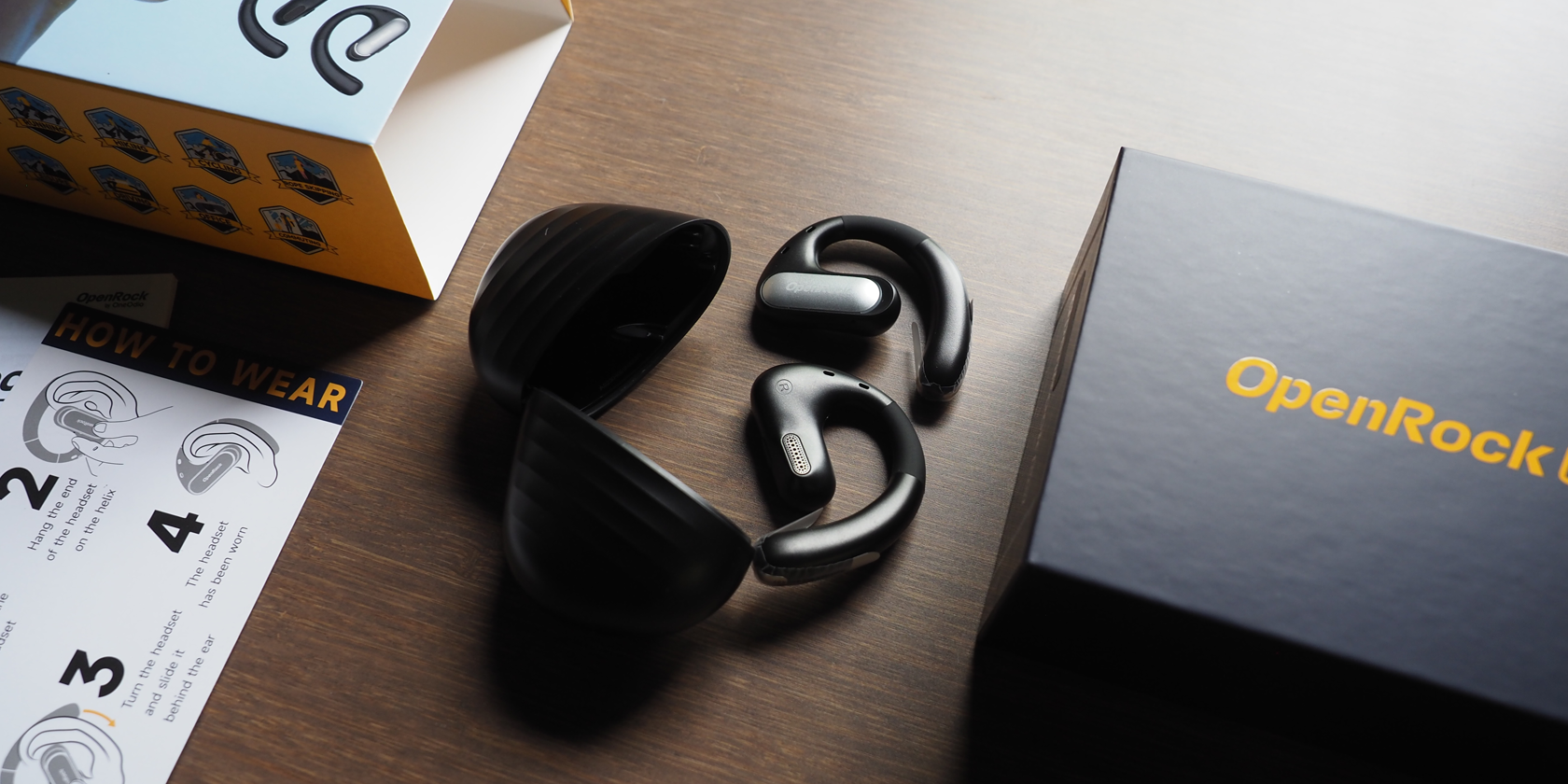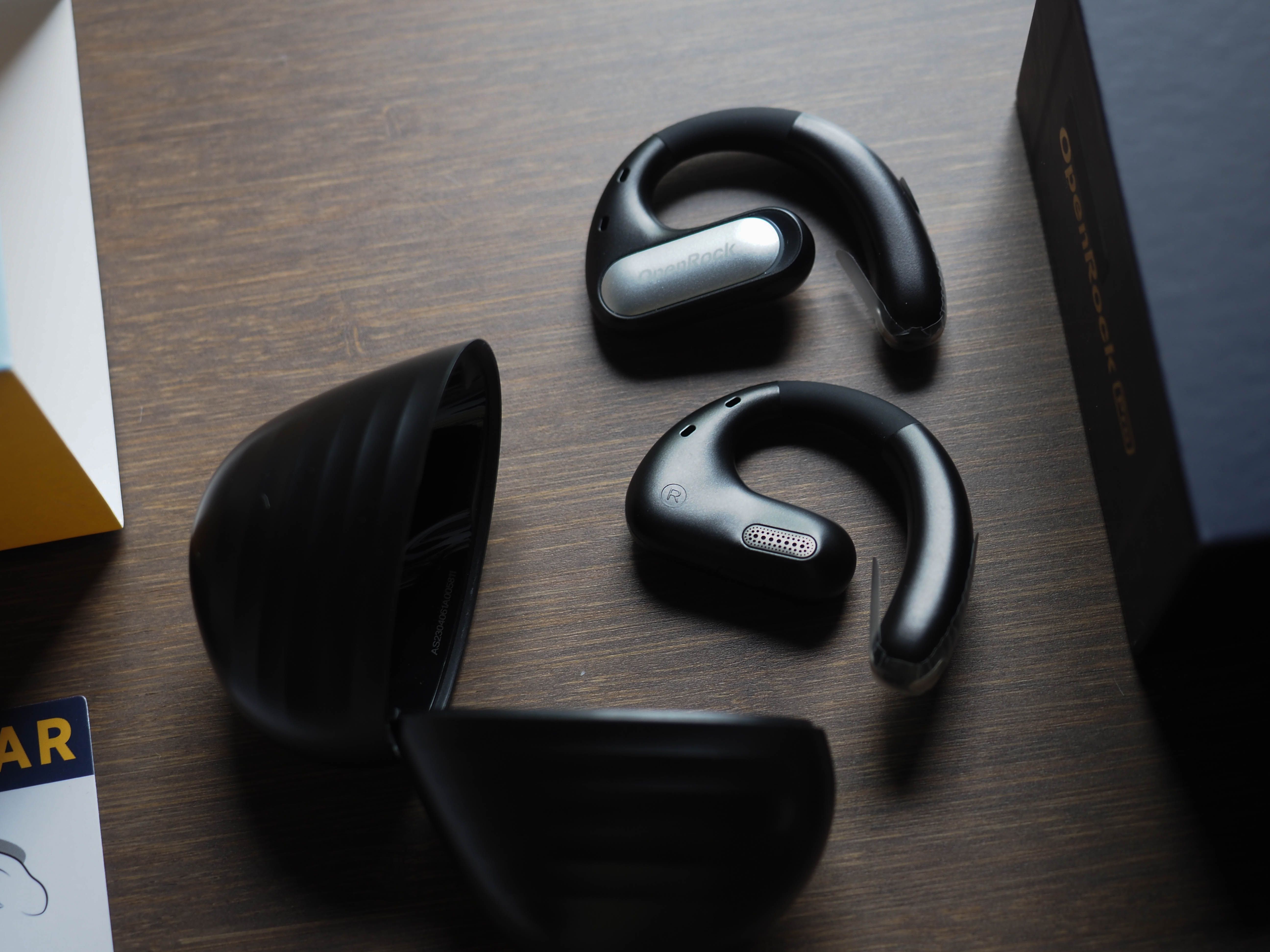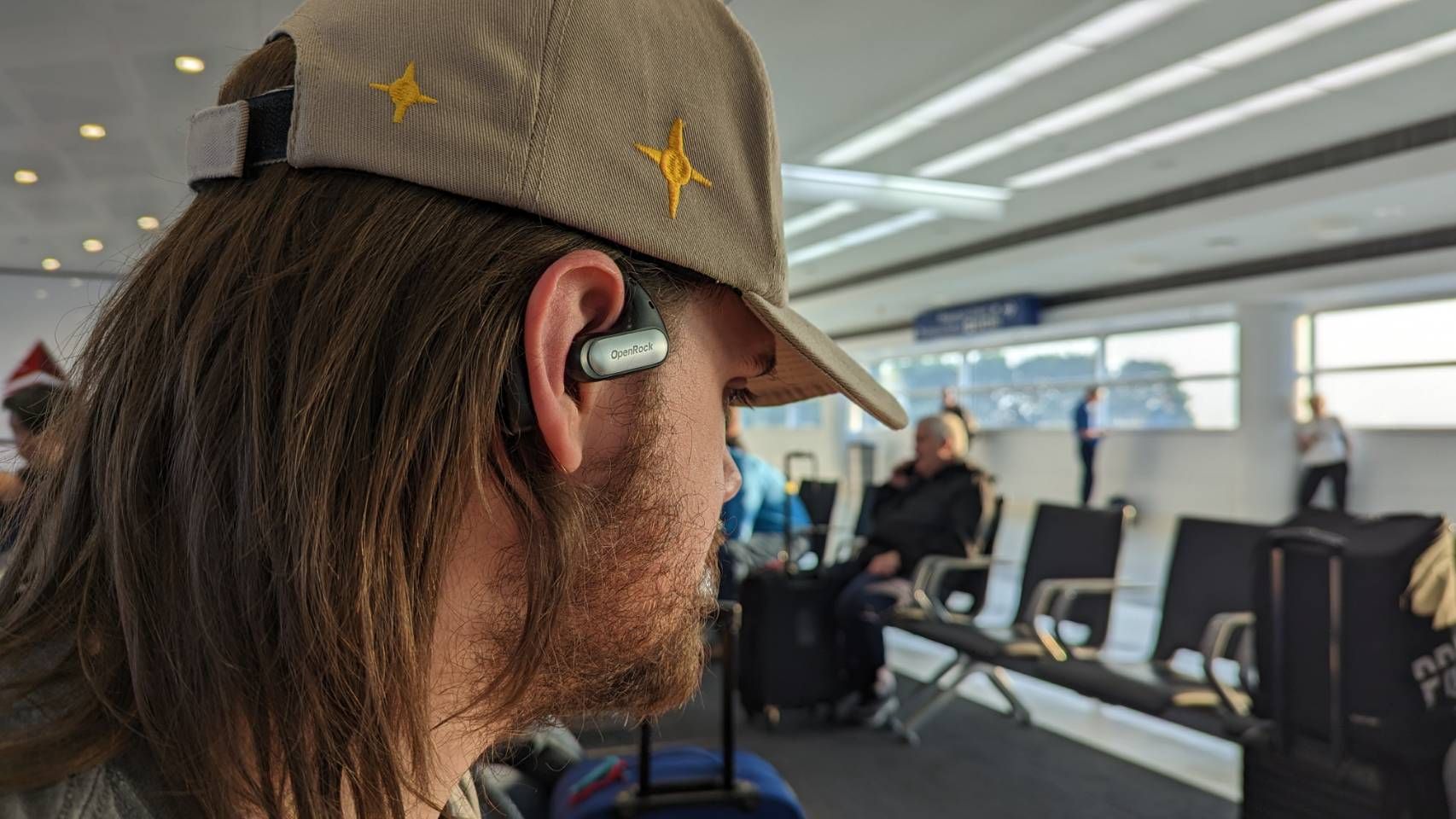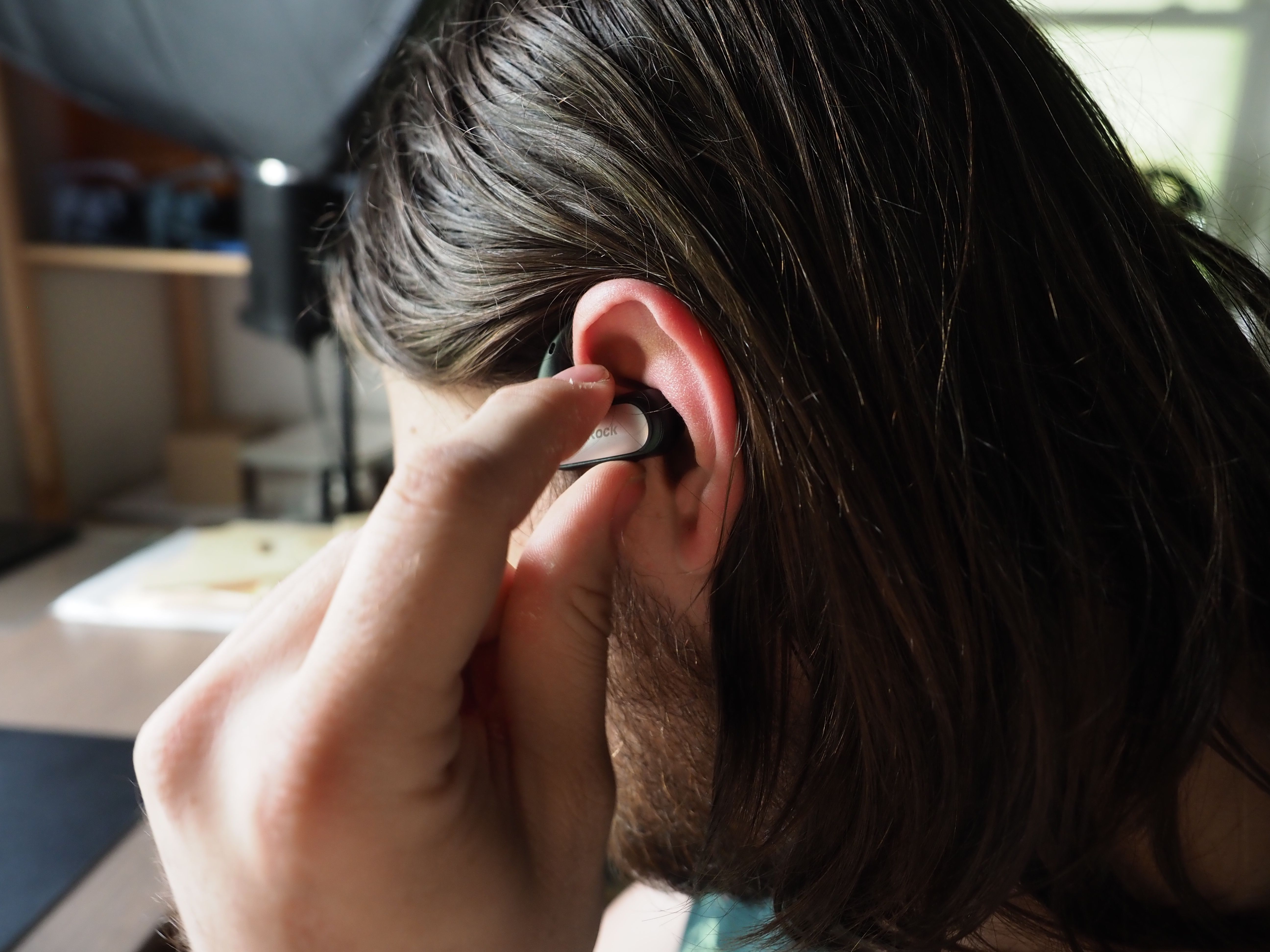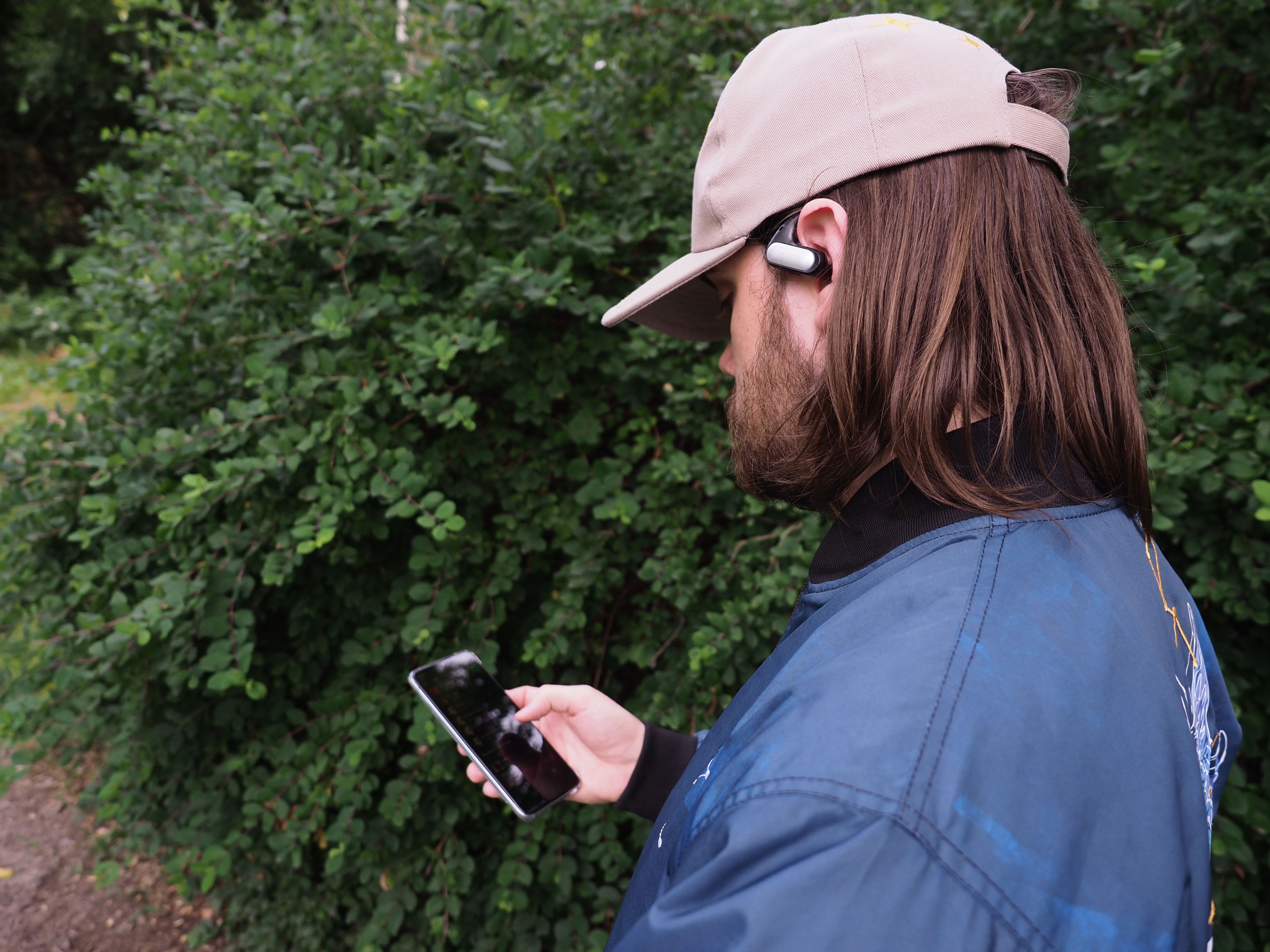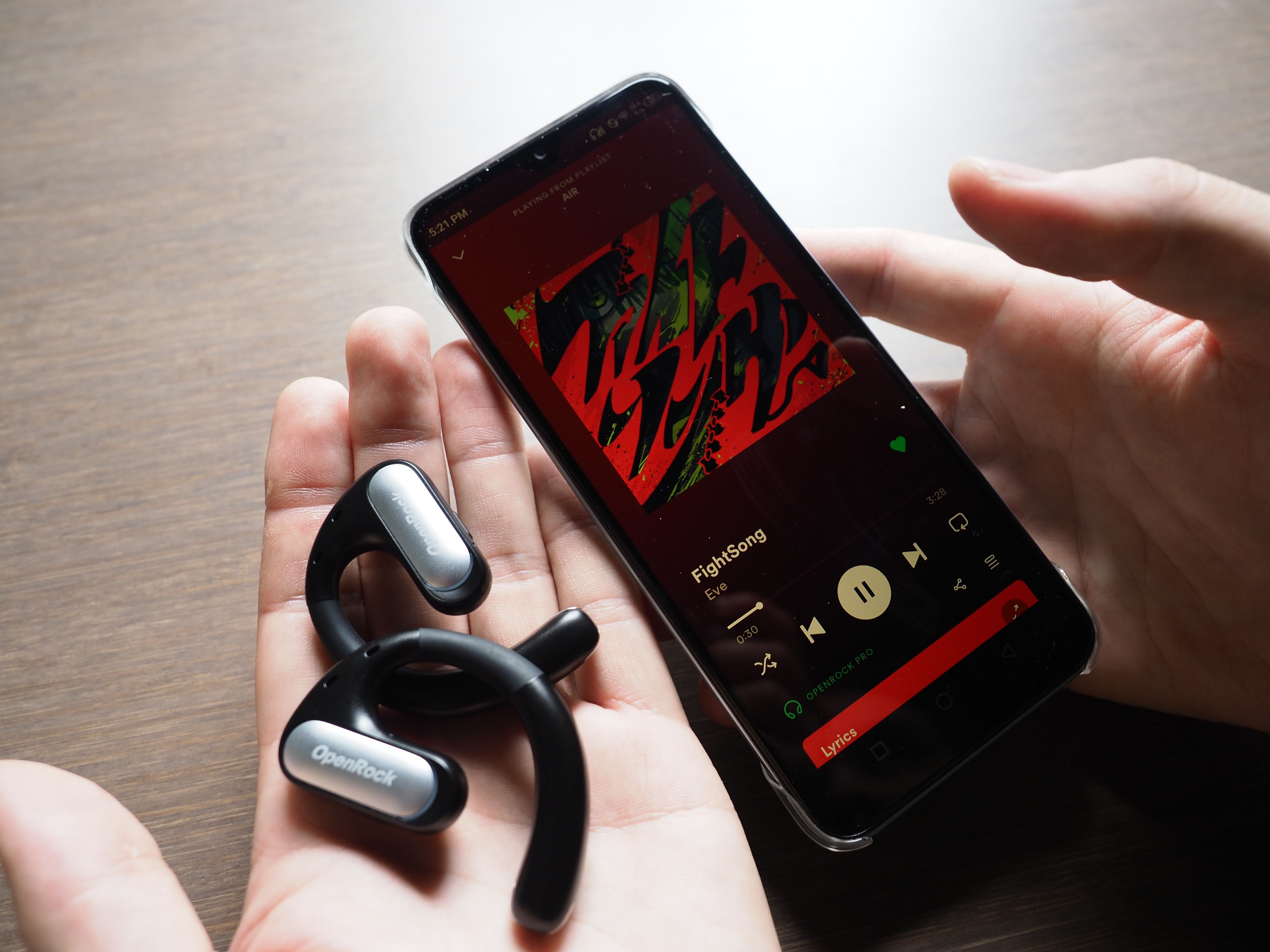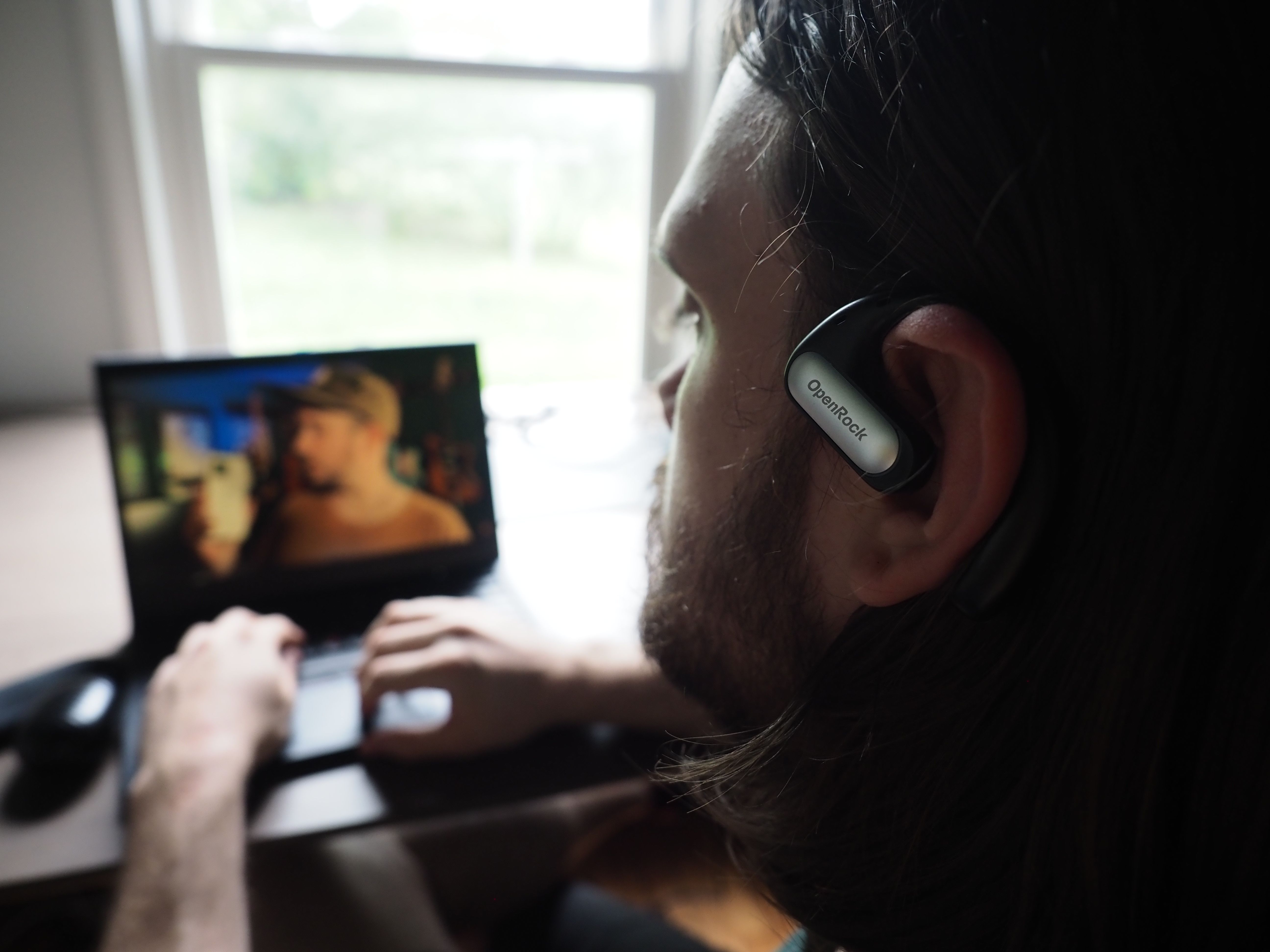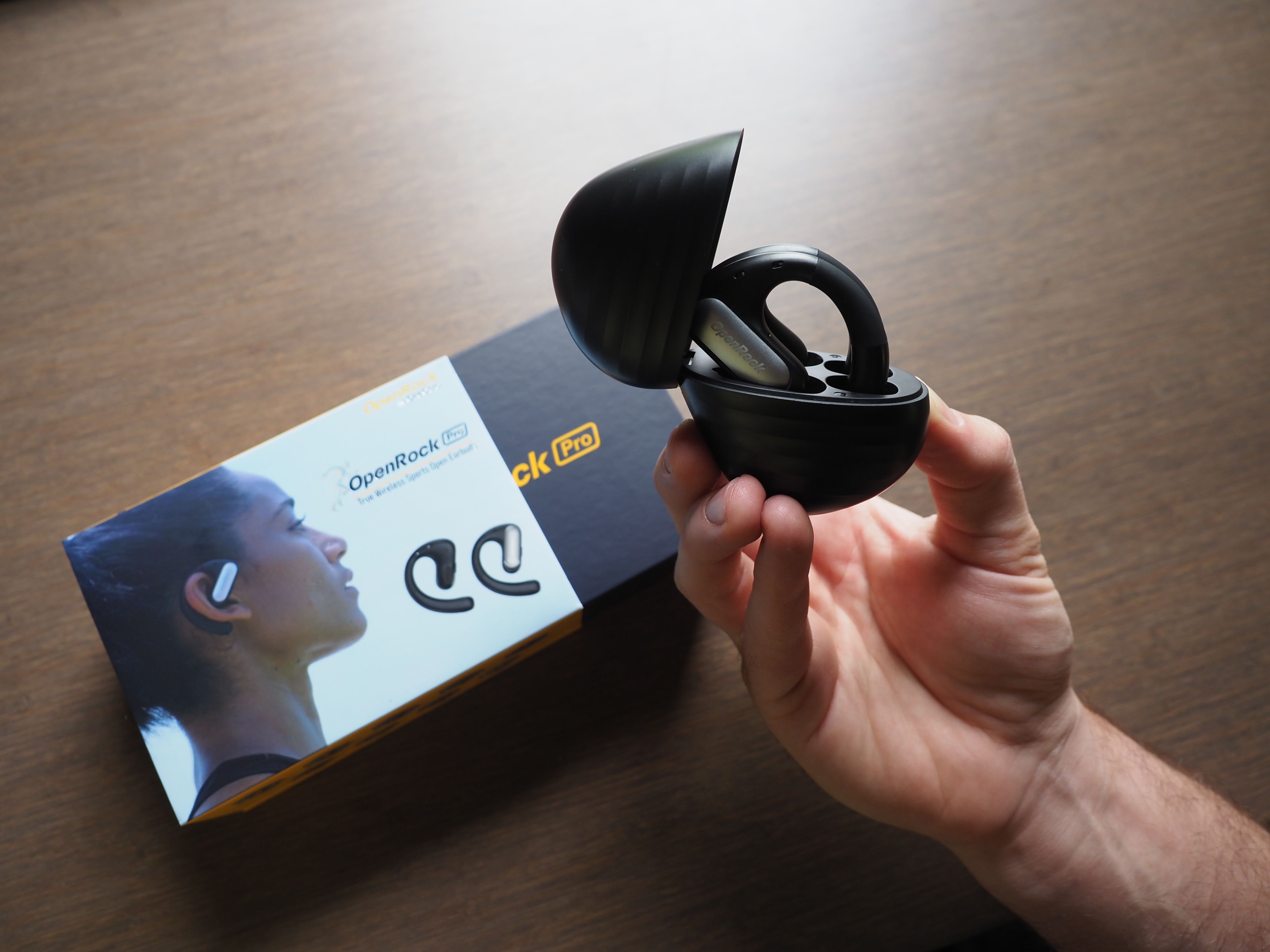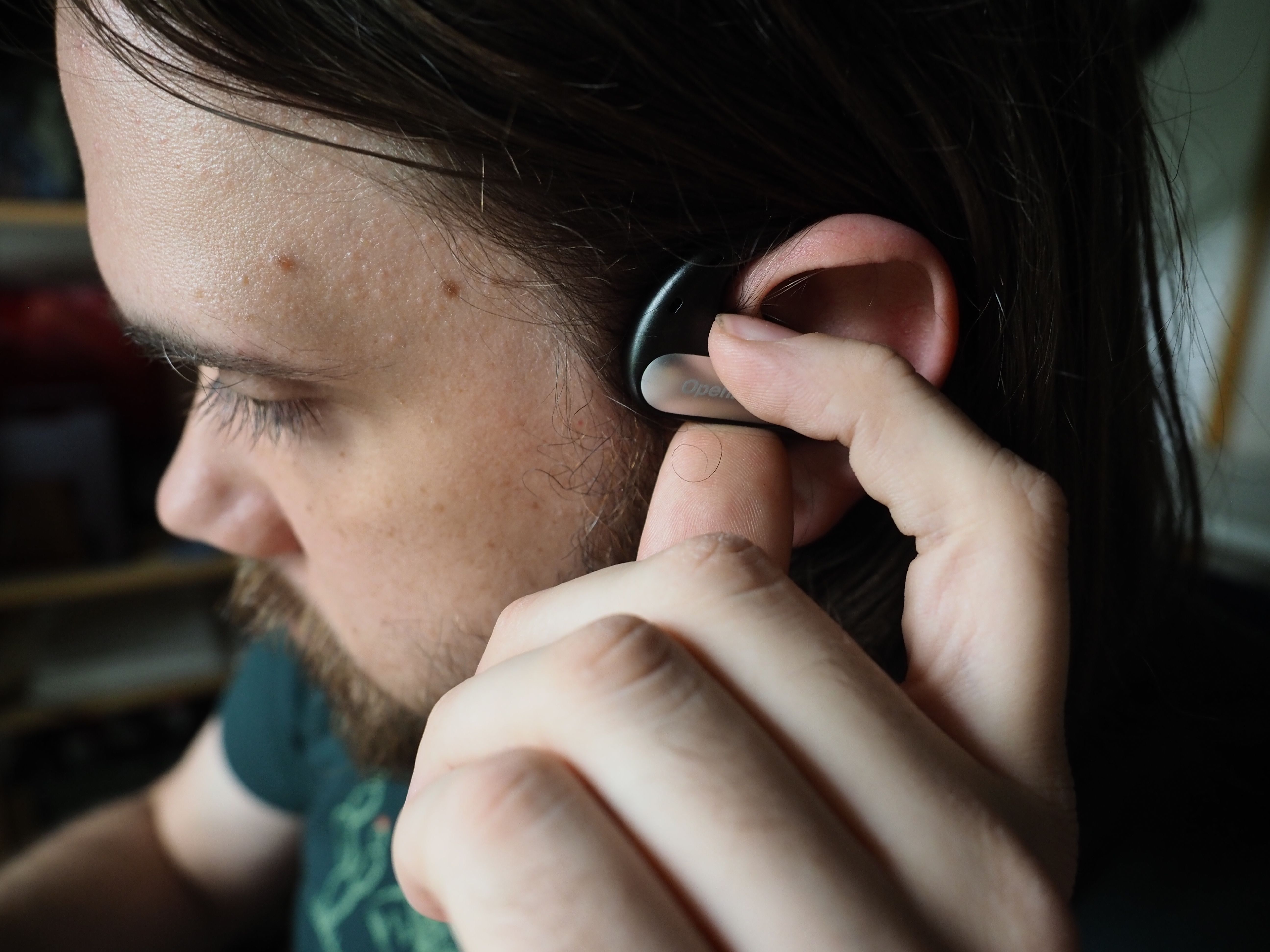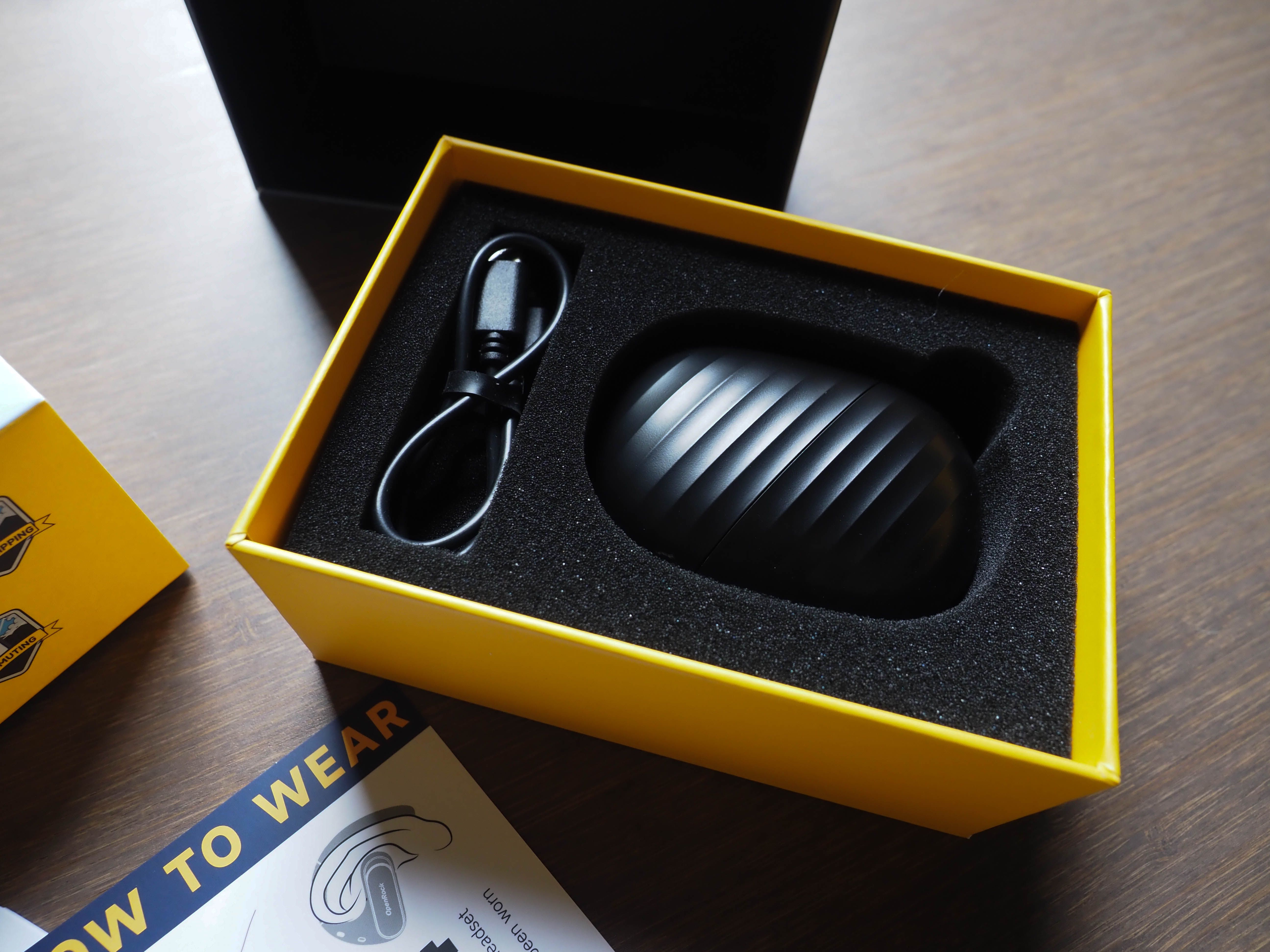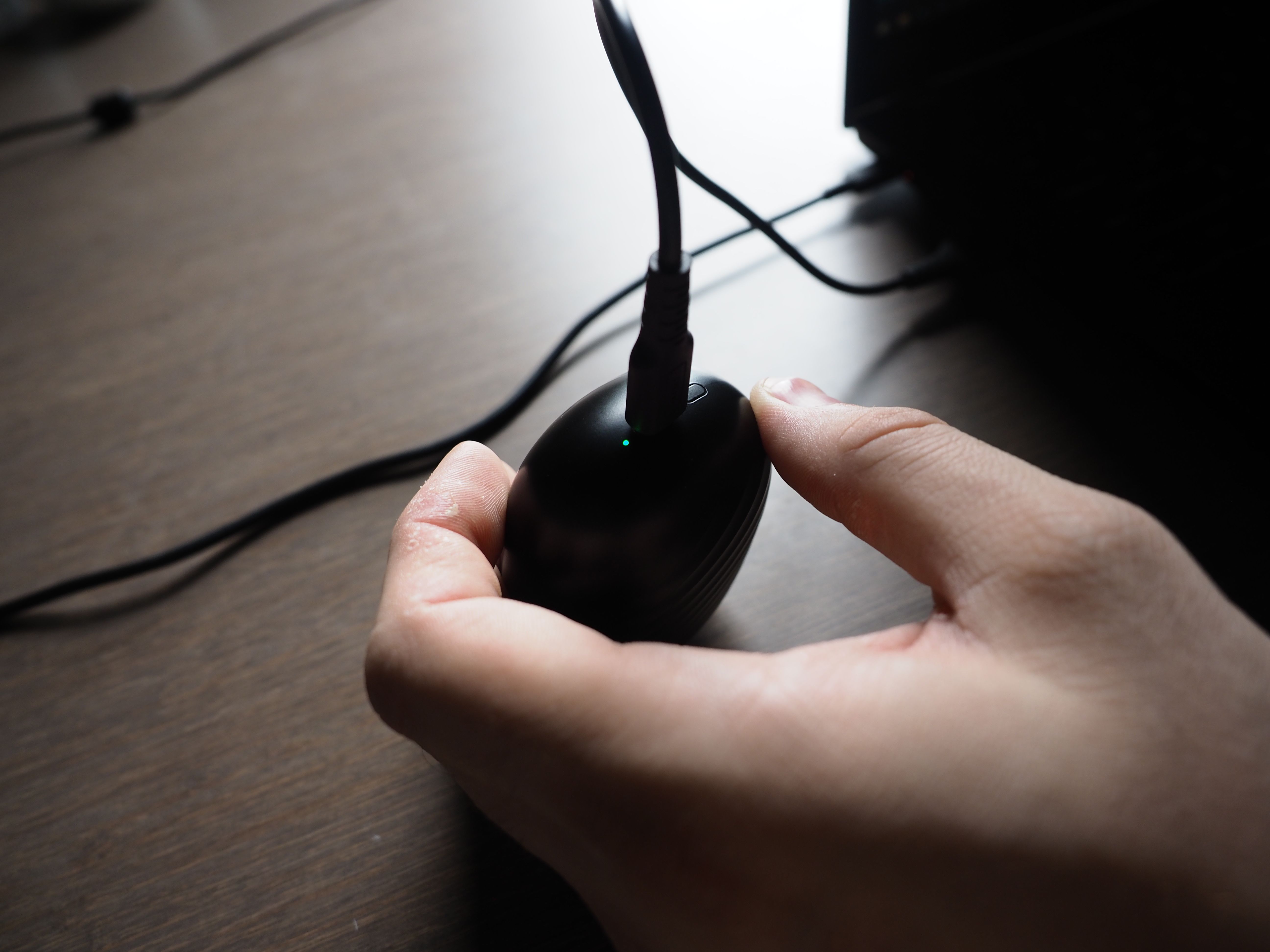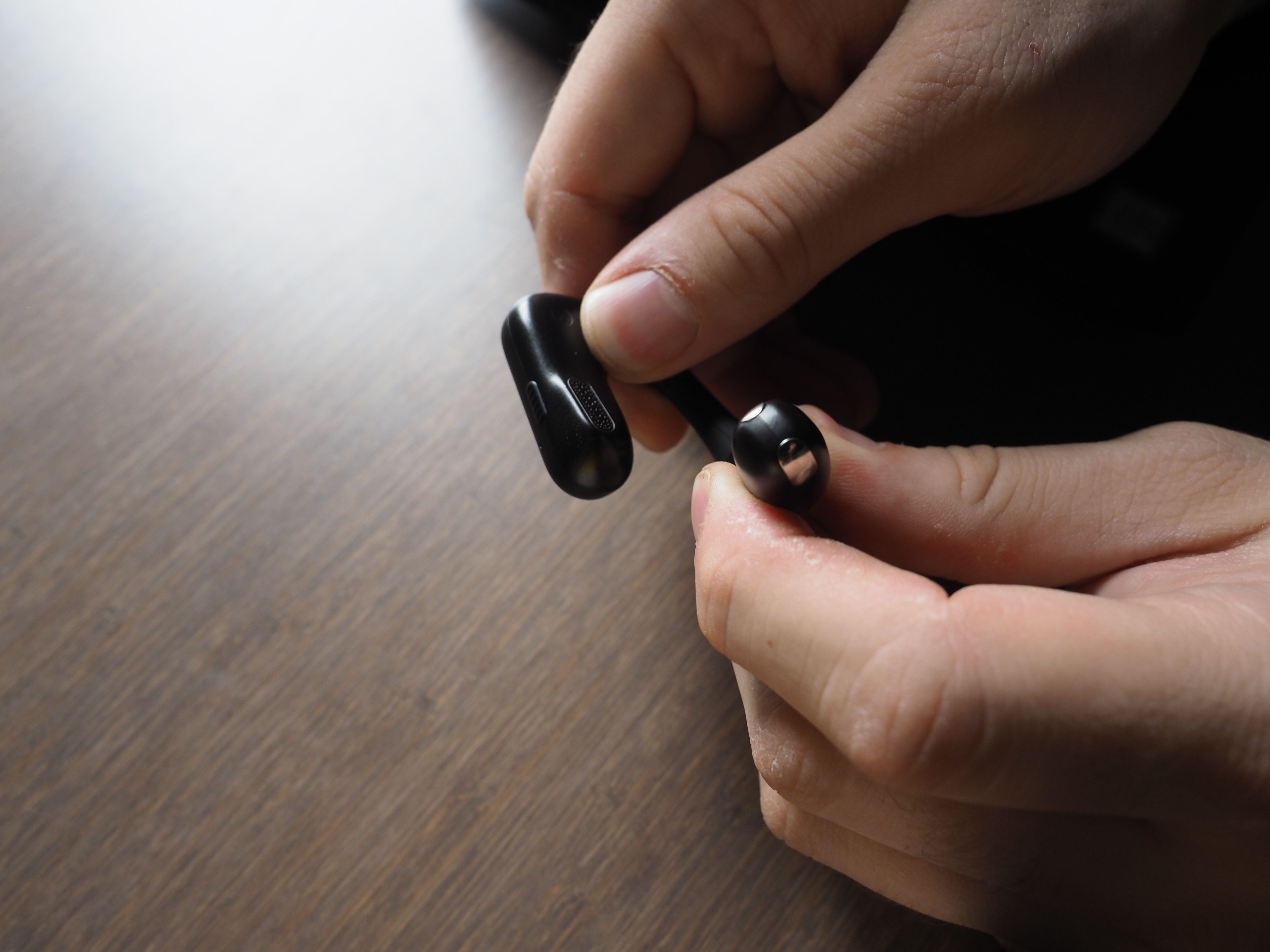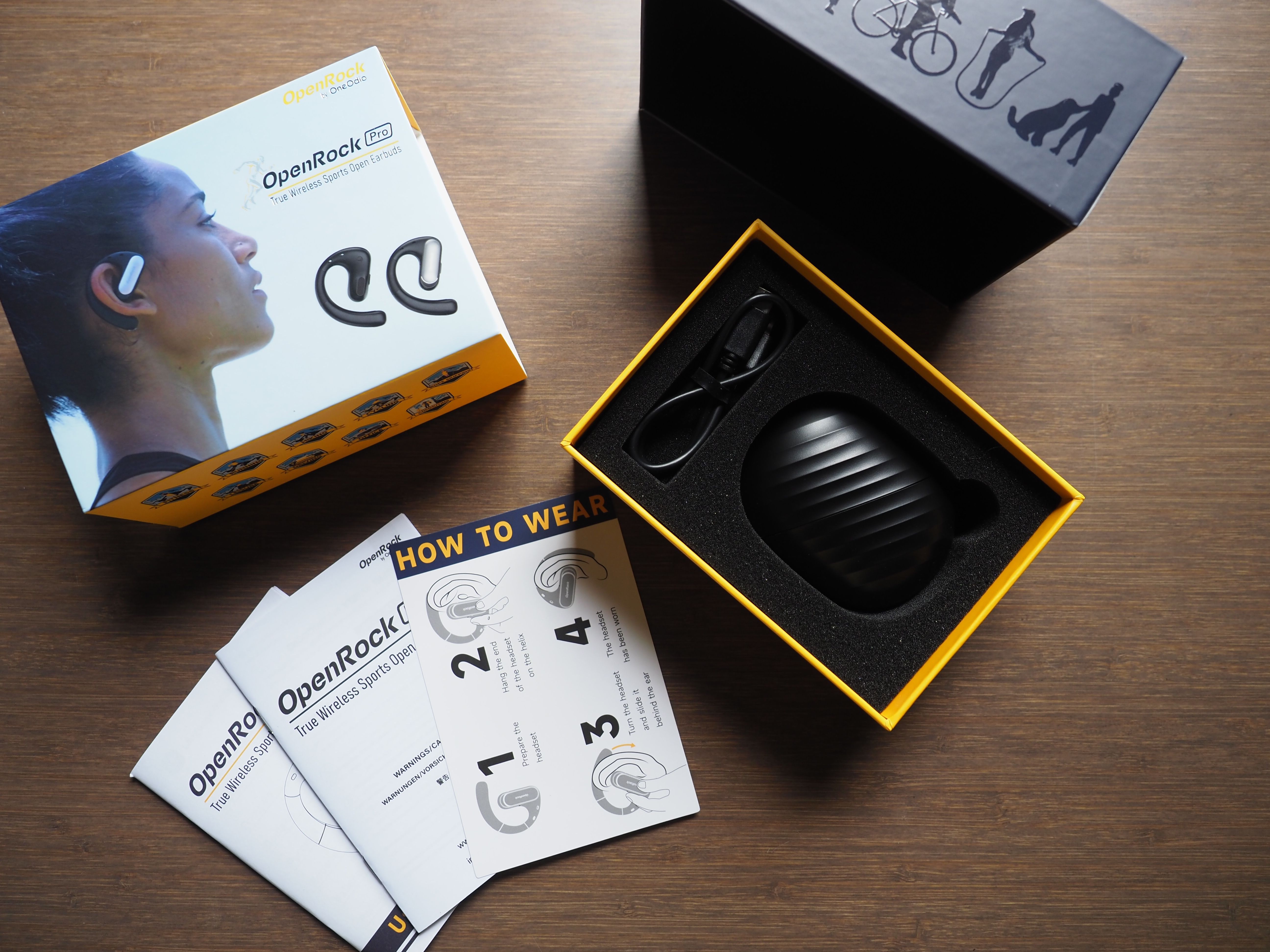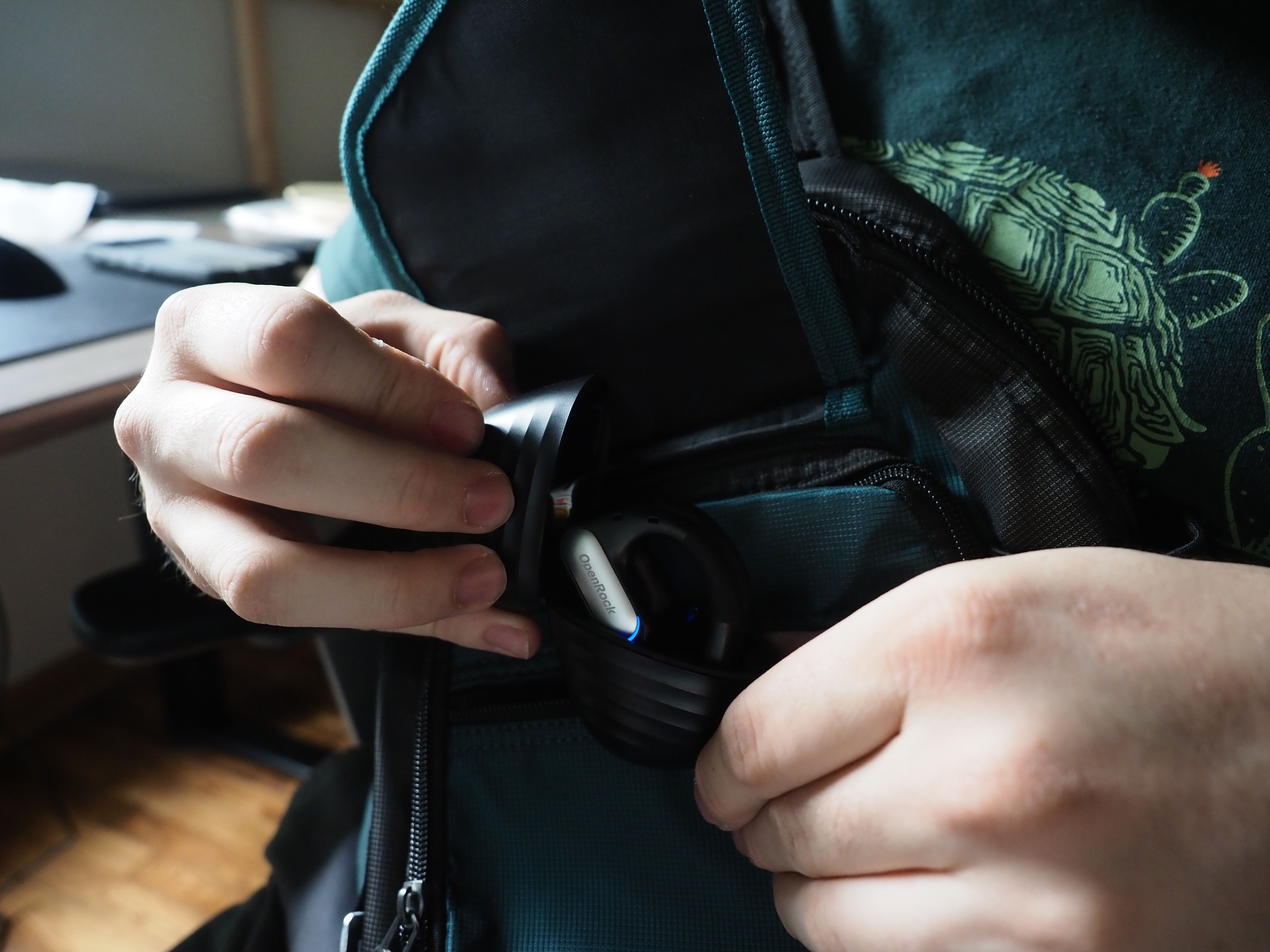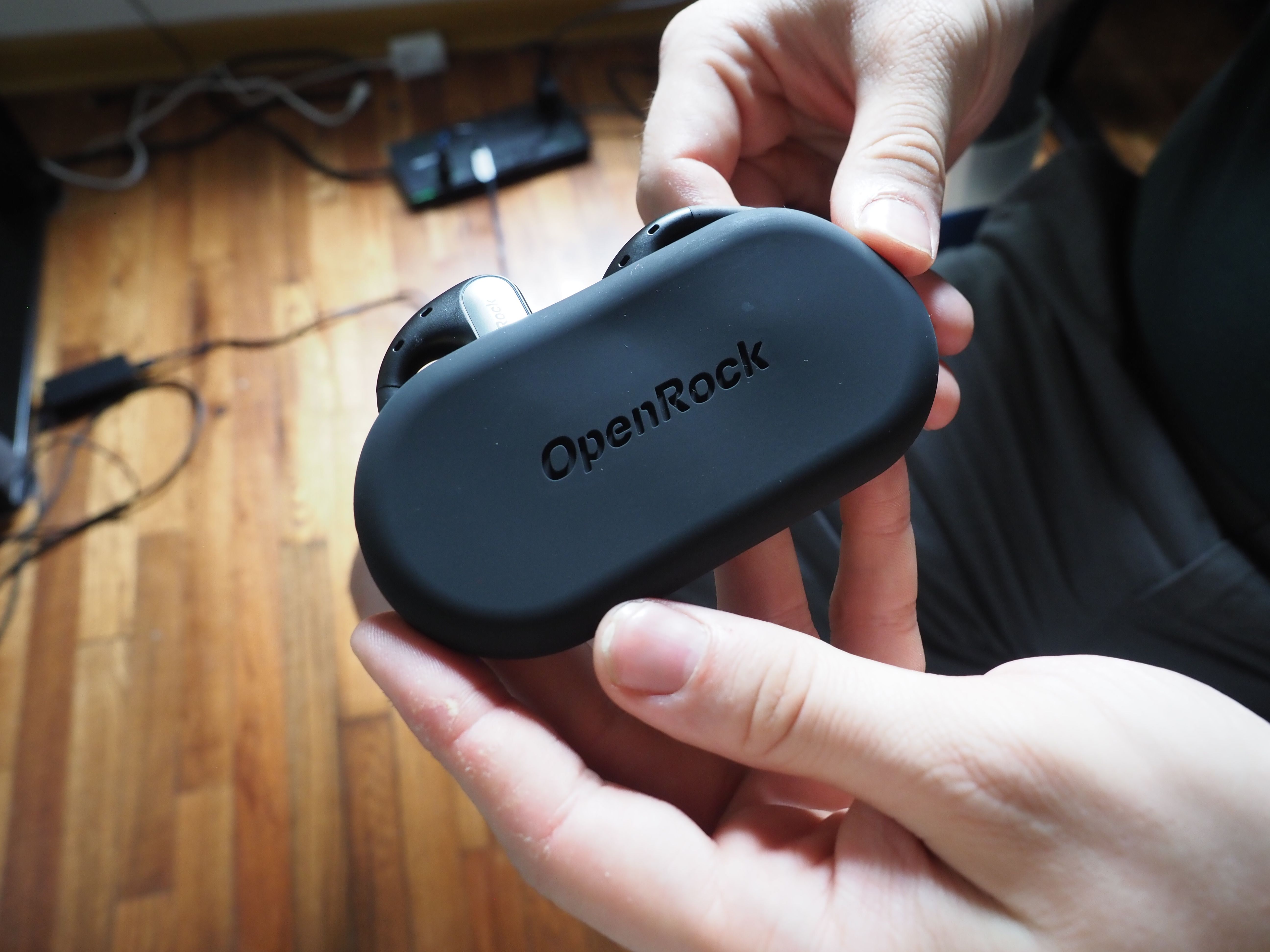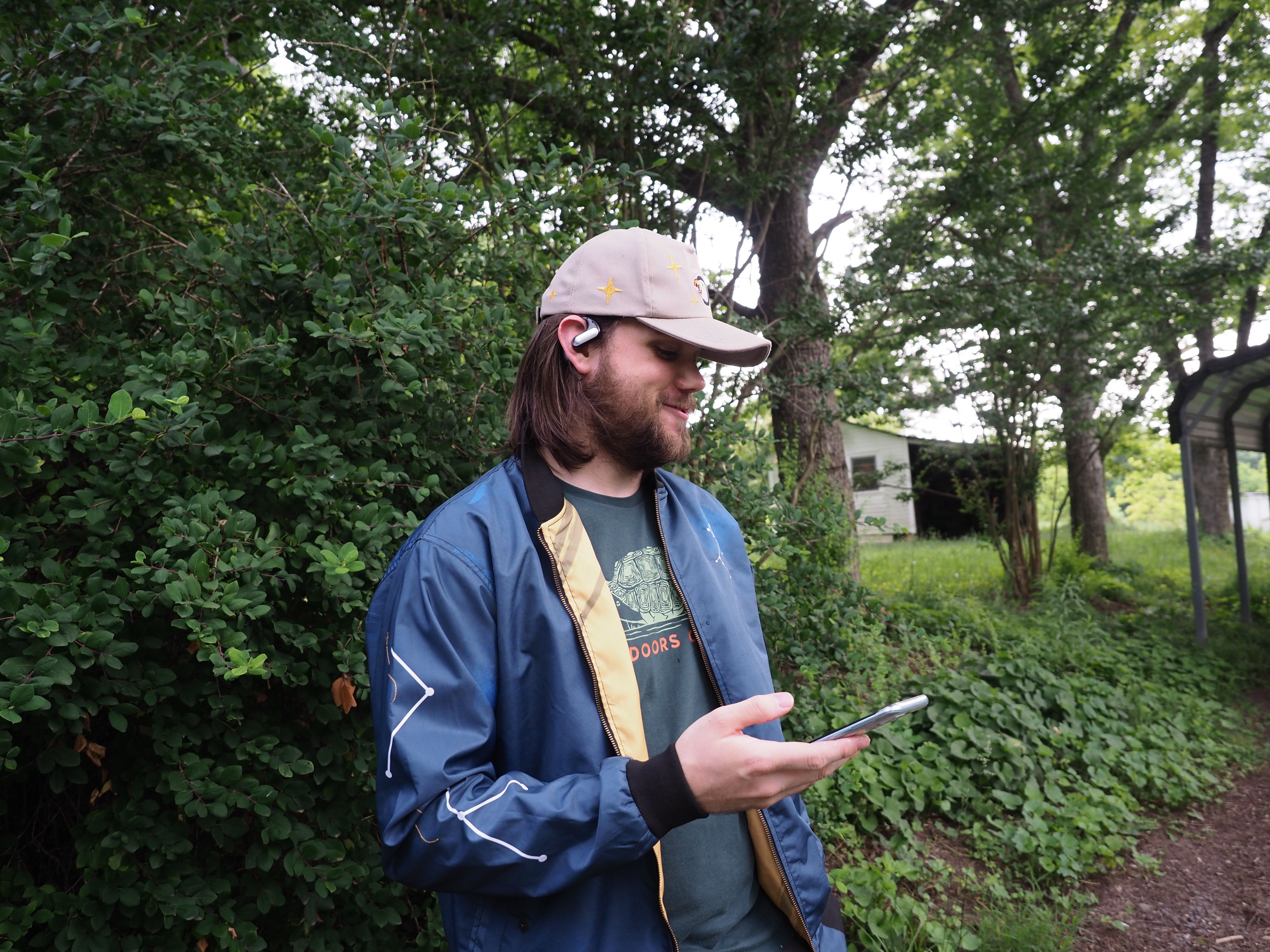OneOdio OpenRock Pro
The OneOdio OpenRock Pro offers many tailored features as an alternative to traditional in-ear earbuds. With a central focus on comfort and sound quality, it strikes an intricate balance while maintaining an affordable price. For those looking to experience rich audio playback while maintaining better awareness of their environment, the OpenRock Pro truly delivers.
- Open ear fit design
- Five-minute charging for one-hour of play
- TubeBass technology
- IPX5 water resistance
- Battery Life: 19 hours (headset only) | 46 hours (charging case)
- Charging Case Included?: Yes
- Microphones: CVC 8.0 dual noise-canceling microphone
- Brand: OneOdio
- Supported codecs: aptX, AAC, SBC
- Bluetooth: 5.2
- IP Rating: IPX5
- Driver Size: 16.2 mm dynamic
- Case battery: 400mAh
- Weight: ~0.2 pounds (90 grams) for the set
- Colors: Black, silver
- Charging Port: Type-C
- Compatibility: A2DP, AVRCP, HFP, HSP
- Noise Cancellation: Yes
- Sweatproof
- Flexible ear hook design keeps them on-ear
- Long battery life when paired with charging case
- Rich audio quality with limited sound leakage to outside environment
- Can reduce pain compared to typical in-ear earbuds
- Max volume could be louder
- Charging case can prove bulky for some
- Multi-function key can be touchy at times
The OneOdio OpenRock Pro open-ear earbuds offer an alternative to those pained by typical in-ear listening. If you're after a more comfortable method for longer listening, its air conduction provides rich sound while keeping you aware of your surroundings. But with all its promise, does the unique design work for most use cases?
OneOdio OpenRock Pro Design
For those used to the typical in-ear earbuds, the OpenRock Pro earbuds contrast with their own unique fitting style outside the ear. Thanks to the ear hook style, the loop of the earbuds can be adjusted to better suit different ear sizes versus relying solely on additional tips. This does have an adjustment limitation (<30°); however, you shouldn't need to tighten or loosen beyond that.
Similarly, the basic wear instructions differ and require some initial feeling out. Rather than insert, you'll tuck the earbuds behind the helix of your ear, then rotate until securely fitted. From there, the remaining learning curve hinges on tapping the button on each earbud placed just above the lobe of your ear.
Beyond fit, the OpenRock Pro features some familiar design choices. Users can choose between a more standard matte black or silver body for its colors. Also, a magnetic tip is at the base of each earbud to secure them inside their charging case.
OneOdio OpenRock Pro TubeBass Technology
While the OpenRock Pro's curvature and fit offer a unique selling point, the question remains whether the audio components still deliver an acceptable listening experience.
To make it a more attractive option than other open-ear headphones, OpenRock utilizes its own TubeBass technology. This provides marked benefits to lower frequencies, which come across as more enveloping and deeper. Meanwhile, the vocals have excellent clarity and richness.
From a bass perspective, this provides a much more encompassing sound, especially at higher volumes. This offers an excellent listening experience with limited sound leakage. But even at the highest volume, it won't register much differently than regular headphones at lower volumes to nearby parties.
Overall, the air conduction keeps it excellently honed to your ear canal. This, combined with the open-fit design that equalizes air pressure, will allow for easier, longer listening.
How Portable is the OneOdio OpenRock Pro?
While the individual earbuds weigh only 13 grams (~0.03 pounds) and sit lightly along the back of your ear, the weight of the case and its shape requires some added consideration. As someone that usually travels with either a backpack or crossbody bag, the weight and its larger dimensions never deterred me. But for anyone traveling particularly light, the charging case can be felt more as it presses against your pocket.
Alternatively, OneOdio offers a silicone case for the earbuds that can either be separately purchased or included via an bundle on your initial purchase. So if you're looking to quickly take your earbuds on a short-trip or workout, it's a much more convenient flat option for pocket carries.
Listening With the OneOdio OpenRock Pro
Once you've grown accustomed to the fitting process, the listening process proves quite fluid as long as you're comfortable adapting to each earbud's buttons. Alternating between the two, I found both to be adequate for even larger-handed individuals. But if you do happen to have longer hair, you'll want to ensure it doesn't become an obstacle to the buttons or the initial fitting of the earbuds behind your ears.
With phone calls and music, most controls hinge on a series of quick presses. To prevent any accidental song skips or declining of calls, the OpenRock Pro also utilizes a timed press. In most cases, you'll find the buttons quite responsive; you may run into occasional control hiccups where they pause versus change volume or skip tracks.
After your first connection, Bluetooth 5.2 will quickly connect to the last remembered device. Similarly, when stepping away, the headphones make a solid attempt to reestablish connectivity even after a fair distance. However, this more aggressive connectivity can result in the need to forget the device when swapping between the likes of a phone and computer.
When you're first using the OpenRock Pro in its default volume range, it provides a fine line between immersion and allows environment sounds to come in. Cranking the volume up to max doesn't offer complete noise isolation even with the dual noise-canceling microphones; this should be expected with open-ear headphones. While the dynamic drivers do a great job with the sound transmission, you'll want to fine-tweak it to your current environment.
Battery Life
For those looking for a headphone with a long-lasting battery, the potential forty-six hours of charge with its fully-charged case make the OpenRock Pro an enticing option. However, the larger case does come as a potential trade-off. Similarly, the case doesn't sit entirely flat, so there's potential for it to wobble off any surface a bit too easily.
However, on the go, you'll get nineteen hours fro just the headphones, which should be plenty for most excursions. Battery life can be impacted by the particular audio being played back, volume range, and operating temperatures, though. So if you're the type to use them at max volume, you can expect a slightly diminished operating time.
But in actual practice, I never felt intensely rushed to charge the headphones and was able to draw out their usage over multiple sessions across a week easily. Even when left low, there's the option to capitalize on the five-minute charging for another hour of use. So if you run the battery low unintentionally, the included USB cable can restore you quickly in a pinch.
Similarly, the button at the bottom of the charging case makes keeping track of your battery range simple. A green light indicates a healthy 51% and above range, whereas orange (21-50%) and red (0-20%) lights indicate the remaining percentages.
Where to Use the OneOdio OpenRock Pro
When considering where to capitalize on the OpenRock Pro's strengths, on-the-go environments gain added benefits. If you're hiking or working out, you can utilize the IPX5 water resistance while allowing for better control and awareness of your environment. In both cases, the OpenRock Pro will sit snuggly behind your ear when fitted, but you should be careful of any movements that could unintentionally loosen the earbuds from behind.
If you're brushing your hair aside, this can occasionally loosen them if unintentionally nudged via their ear hooks. But most of the time, I experienced a minimal effect on their hold. Even when lifting objects above my head or submitting them to some windier environments, they've stayed in place.
Additionally, I've found the OpenRock Pro quite valuable during longer travel. When having to wait at the airport or travel in-between different gates, the option to easily overhear announcements has provided quite valuable without a loss of entertainment or communication.
However, when using the OpenRock Pro in heavier city noise, the outside environment can prove to be overwhelming, especially for lighter playback such as podcasts.
The OpenRock Pro shines where a finer balance of listening is required. While more subtle in some cases, they can offer a good deal of value when transitioning between different levels of immersion.
Should You Buy the OneOdio OpenRock Pro?
If you're not a fan of traditional earbuds or have more sensitive ears, the OneOdio OpenRock Pro is an excellent option. It doesn't offer the totality of noise isolation and has a little sound leakage, but it provides an excellent middle ground. If you want the option to listen to music or take calls on the go, you don't have to sacrifice awareness of your exterior environment.
As long as you weigh your exact sound needs against its styling, the OpenRock Pro provides an affordable experience. Just need to make sure it fits your listening needs and can go where it needs to go with you.

